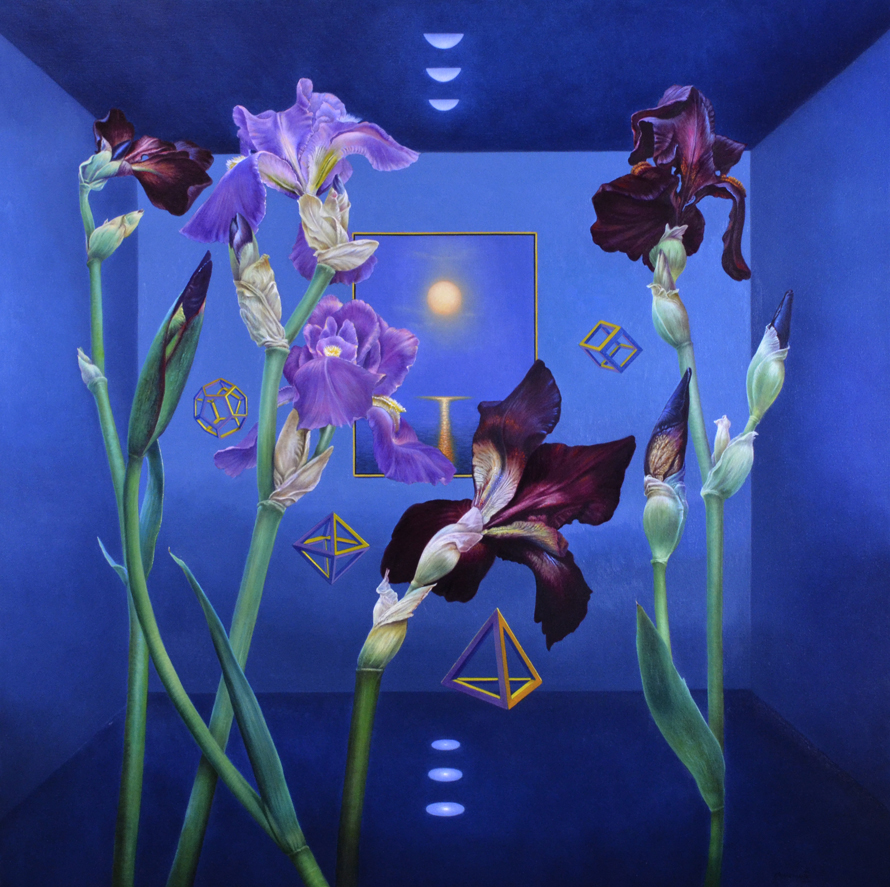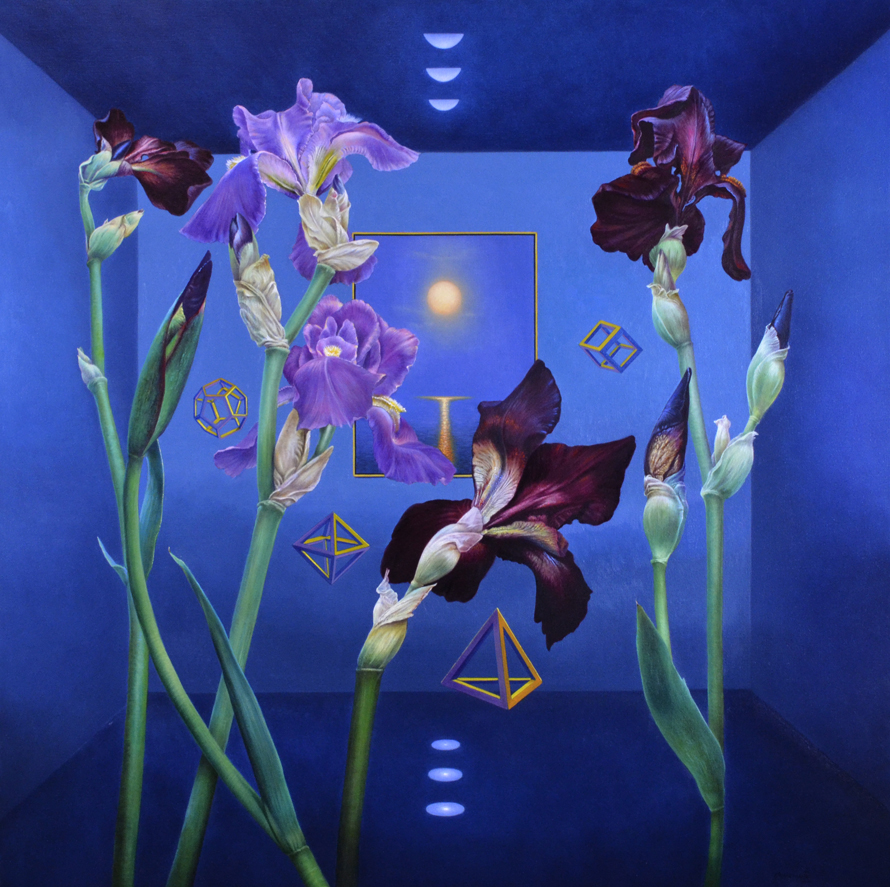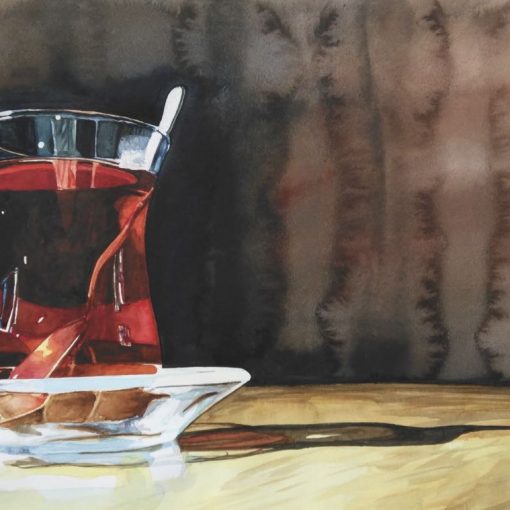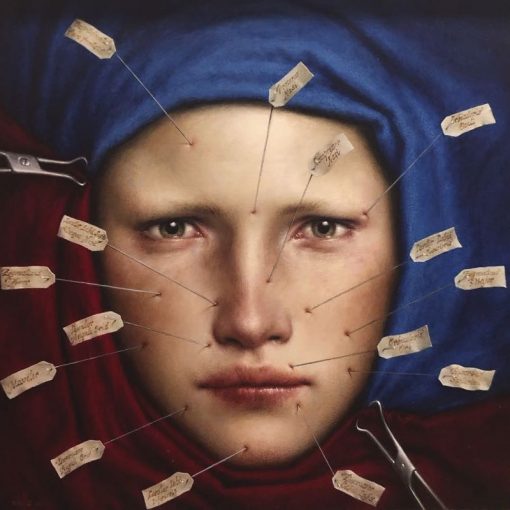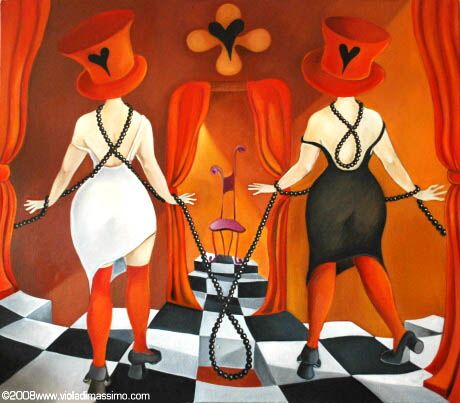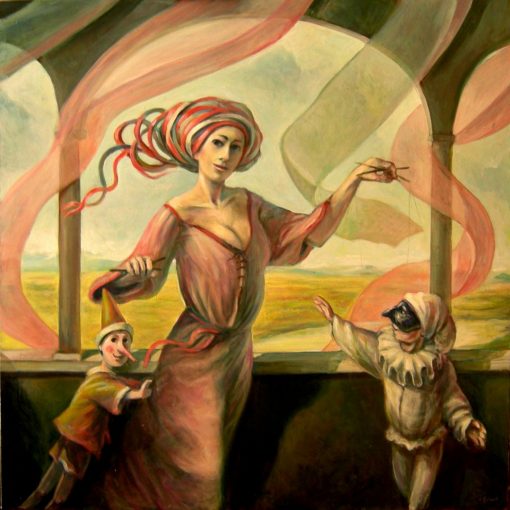Il Maestro Antonio Nunziante sarà presente alla quinta edizione di EuroExpoArt presso Vernice art Fair Forlì 20-21-22 Marzo 2020
“Il napoletano è, per diritto divino e di nascita, non surrealista ma extrareale”
Philippe Daverio
Viaggio nel tempo di Antonio Nunziante è il titolo più adatto che questo pittore napoletano ha dato ad alcune delle sue opere recenti.
Lo ha dato, consapevole forse, con intuito di sicuro, per tre diversi motivi.
Il primo, innegabilmente il più attraente per l’antropologo culturale, è quello che si riferisce alla sua origine napoletana.
Chi nasce lì non può estraniarsi dalle condizioni storiche che lo plasmano, non può non sentirsi per un certo verso greco, e poiché della pittura greca antica non sappiamo nulla, non può che tentare di inventarsela riprendendo le storie che la letteratura d’allora ha voluto trasmettere.
L’artista antico è stretto e costretto nella visione che la filosofia ci ha trasmesso:.
vincolato alla mimesi, alla necessità di restituire non tanto la realtà ma l’idea che della realtà è fonte e dalla quale il pensiero è vincolato.
A Napoli si è greci e platonici comunque.
E l’idea che sovrasta costantemente la psiche creativa.
quella d’una antichità incombente che risorge costantemente, che è viva ben al di là di ogni voglia di citazione.
Quando Winckelmann fece il suo viaggio a Paestum, andava sù a vedere e censire i ruderi del passato, ma nella sua mente romantica e moderna era attratto in modo inarrestabile dalla voglia di trovare ciò che del passato era vivo ancora, la famosa rosa di Paestum e le acque nelle quali si abbeveravano i tori degli dei.
Poco importa che essendo egli polacco abbia confuso la rosa con l’oleandro; ma l’oleandro era così diverso dalle rose estive polacche da poter sembrare veramente il fiore d’una antichità tuttora viva.
E poco pure importava che le bufale che trovava negli acquitrini fossero appena state importate dalla monarchia borbonica; per lui, abituato a vedere pacifiche vacche nell’Europa settentrionale, quelle erano le dirette discendenti dei tori di Minosse il Cretese e del terribile Minotauro.
Ed ecco perché dinnanzi ai templi dell’antichità, spenta nei propri ruderi, appare nei dipinti di Nunziante la rosa e la tavolozza che la vuol ritrarre.
L’altro motivo è forse riservato solo a chi conosce e frequenta il cromatismo partenopeo, quello che decora le stanze dei palazzi con le policromie delle tempere che la riscoperta settecentesca di Ercolano e Pompei resero talmente naturali da farle sembrare presenti per sopravvivenza e non per ispirata citazione.
Gusto quello delle tempere che fu talmente pregnante da far nascere una sequenza di generazioni fra i pittori paesaggisti che restituivano alla curiosità del viaggiatore in Italia la memoria d’una luce che altrove non esisteva.
Il terzo motivo della pittura di Nunziante.
esistenziale, .
totalmente esistenziale, lo è a tal punto da essere sostegno unico e possibile della sopravvivenza dell’anima in quella parte benedetta e maledetta al contempo del golfo più affascinante del Mediterraneo.
A Napoli si vive soltanto negando la meccanica della storia e assorbendo in modo barocco la ciclicità degli eventi che fu scoperta dal più fine dei filosofi locali, quel Giambattista Vico che il mondo di oggi troppo spesso vorrebbe ignorare.
La storia è tonda e non tonta, lo percepì pure Nietzsche e lo insegnò col mistero dei suoi scritti ai fratelli Dioscuri della Metafisica.
Napoli è l’unica città che legittimò la non appartenenza alla modernità, in una esaltazione sublime, già nella pittura di Mancini e nella scultura di Gemito.
Mentre l’Europa intera rincorreva le onde delle avanguardie, questi due vaticinatori dalla barba lunga e bianca decisero una strada loro propria, che poteva allora apparire fuori contesto, ma che la storia successiva si trovò obbligata a recepire, a sancire e ad applaudire.
Quella strada prevedeva, nel fosco dì del secolo morente, che il secolo stesso non esistesse se non come ritorno d’un eterno presente.
Infine, ricordatevelo, il napoletano è, per diritto divino e di nascita, non surrealista ma extrareale.
E se ritrovate in Antonio Nunziante citazioni che potrebbero riportare a Magritte, a Dalì o ai fratelli De Chirico, ebbene, è solo perché questi in fondo all’anima avevano un sedime napoletano, ma non ne erano al corrente.
Nessuno glielo aveva ricordato.
Non sempre l’arte è informata; talvolta è deformata, quanto lo è il capriccio sperimentale della sua storia.
Neapolitans are by birth and divine right not surrealists but extra-real Philippe Daverio Viaggio nel tempo (Journey in Time ) is the very apt title that the Neapolitan painter Antonio Nunziante has given to some of his recent works.
There are three different reasons for this choice, prompted perhaps by awareness and certainly by intuitive insight on his part.
The first, and undeniably the most appealing to a cultural anthropologist, regards his place of origin.
As a Neapolitan, he cannot sever himself from the historical conditions that mould him and cannot help feeling Greek in a certain sense.
And then, since we know nothing of ancient Greek painting, he can only invent it by drawing upon what the literature of the time has handed down.
The ancient artist is confined and constrained in the vision that philosophy has transmitted: bound to mimesis, to the need to represent not so much reality as the idea that is its source and that constrains thought.
Neapolitans are Greek and Platonic willy-nilly.
And the idea that constantly dominates the creative psyche is of an underlying antiquity that is continually reborn and vital far beyond any desire for citation.
When Winckelmann made his journey to Paestum, it was certainly in order to see and survey the ruins of the past, but his modern, romantic mind was irresistibly attracted by the desire to discover what of the past was still alive, the famous rose of Paestum and the waters in which the bulls of the gods slaked their thirst.
It matters little that, being Polish, he mistook an oleander for a rose.
The oleander was so very different from Poland’s summer roses that it really could be taken for the flower of a still living antiquity.
And little does it matter that the buffalo he found in the marshes had just been imported by the Bourbon monarchy.
For someone accustomed to the placid cows of northern Europe, those were the direct descendants of the bulls of Minos, king of Crete, and the terrible Minotaur.
And this is why the rose and the palette ready to depict it appear before the temples of an antiquity extinguished in its ruins in Nunziante’s paintings.
The second is perhaps exclusively reserved for those well acquainted with the Neapolitan colours, the polychromatic tempera decorations of rooms in buildings that the 18th-century rediscovery of Herculaneum and Pompeii made so natural as to appear present through survival rather than inspired citation.
This taste was so fruitful as to give birth to a series of generations of landscape painters that satisfied the curiosity of travellers in Italy with the memory of a light that existed nowhere else.
The third reason underlying Nunziante’s painting is existential, totally existential, to the point of being the only possible support of the survival of the psyche in that simultaneously blessed and accursed part of the Mediterranean’s most enchanting gulf.
You can live in Naples only by denying the mechanics of history and absorbing in some Baroque fashion the cyclical nature of events as discovered by the finest of the local philosophers, Giambattista Vico, someone ignored all too often by the world today.
History is circular and not stupid.
Nietzsche also realized this and taught it with the mystery of his writings to De Chirico and his brother Alberto Savinio.
Naples is the only city that legitimized the fact of not belonging to modernity, in sublime exaltation, with the painting of Mancini and the sculpture of Gemito.
While the whole of Europe chased after the waves of the avant-garde movements, these two prophets with long white beards decided to take their own stance, one that may have appeared misleading at the time but that later history was obliged to accept, endorse and applaud.
In the gloom of the dying century, this stance held that the century itself did not exist other than as the return of an eternal present.
Finally, and please remember this, Neapolitans are by birth and divine right not surrealists but extra-real.
And if you find citations in Antonio Nunziante that could refer to Magritte, Dal.
or the De Chirico brothers, it is only because they had a Neapolitan streak deep down in their psyche but did not realize it.
Nobody reminded them.
Art is not always informed but sometimes deformed, to the same extent as the experimental caprice of its history

